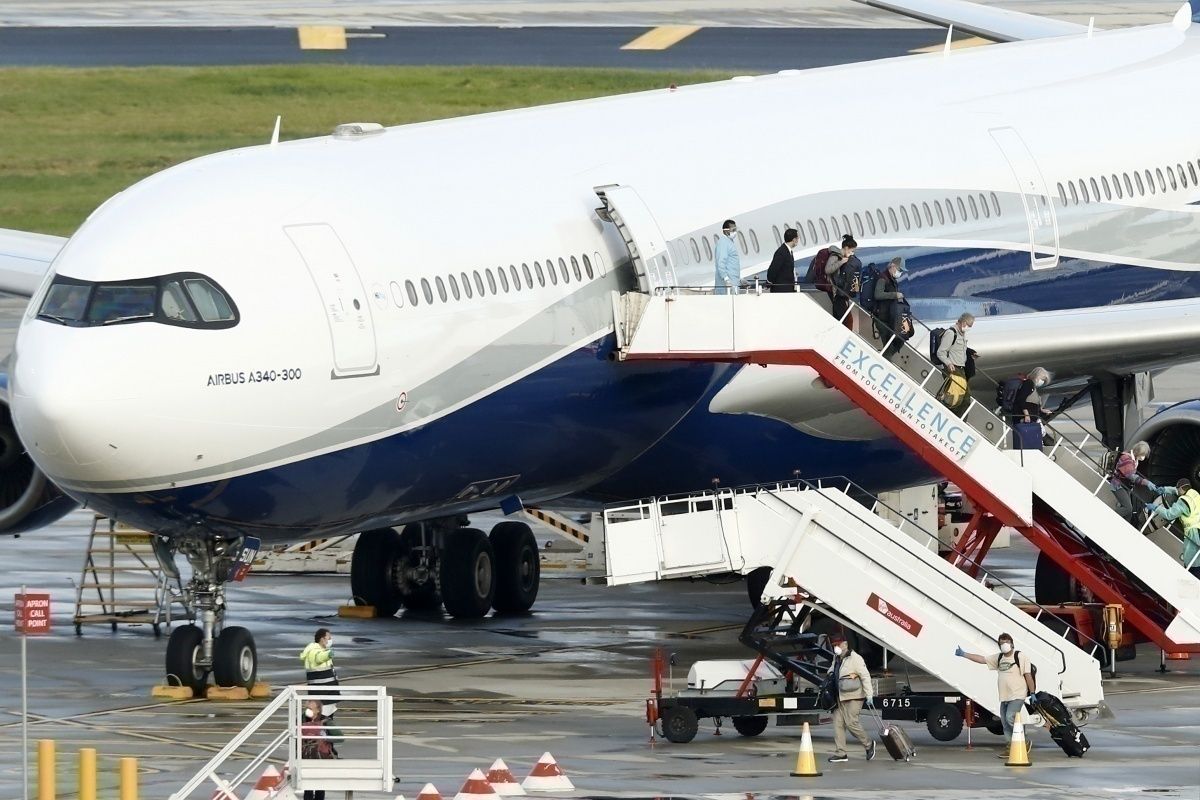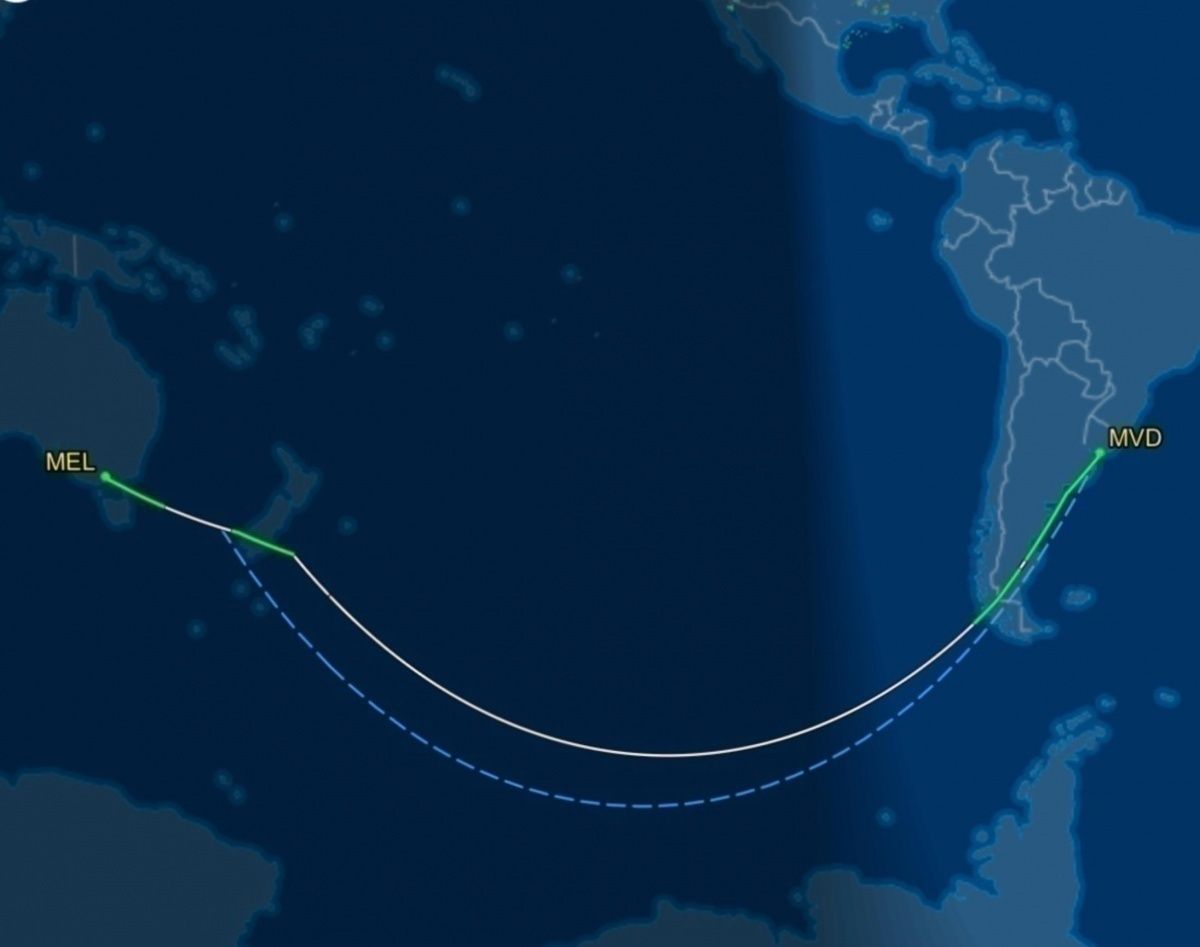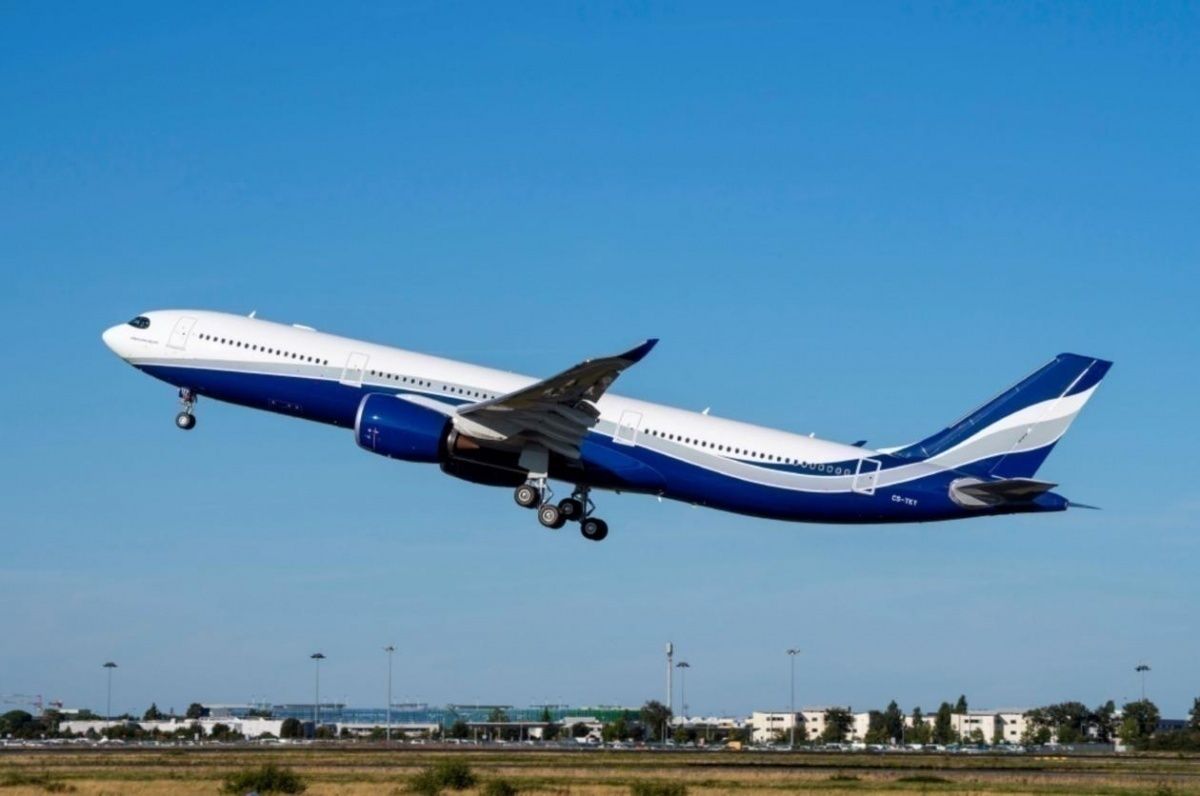One Hi Fly crew has ventured far from their normal flight paths over the weekend. A chartered Hi Fly A340-300 flew a repatriation flight from Montevideo to Melbourne. The flight landed at 06:45 (local time) on Sunday, 12 April. The flight was noteworthy for several reasons, including it being one of the longest A340-300 flights ever.
A mercy dash across the far reaches of the South Pacific
Hi Fly's LinkedIn site reveals that the aircraft was 9H-SUN. It left Carrasco International Airport outside Montevideo at 01:45 (local time) on Saturday morning. The plane and flew straight to Melbourne's Tullamarine Airport. It took 16 hours and nine minutes to fly the 12,338 kilometers.
The flight carried 217 passengers of which 128 had tested positive for COVID-19. After landing, authorities took one passenger to hospital. The remaining passengers went straight into a mandatory 14-day hotel quarantine.
Cruise operator Aurora Expeditions chartered the flight to repatriate passengers and crew from the ill-fated Greg Mortimer. The Greg Mortimer is a 7,892-tonne cruise ship that had been stuck off the coast of Montevideo for a fortnight after COVID-19 broke out on board. The ship was primarily carrying Australians. It left Ushuaia on 15 March for a cruise to the Falklands, South Georgia, and Antarctica.
After days of wrangling and increasingly desperate conditions on-board, an evacuation deal was brokered between Aurora Expeditions and the Australian and Uruguayan governments. Hi Fly sent 9H-SUN down to Montevideo for the mercy dash across to Melbourne.
Hi Fly carving a niche operating repatriation flights
Hi Fly has been quick to make the most of a bad situation by setting up COVID-19 "Ready to Go" response teams. These teams handle every aspect of a COVID-19 flight repatriation. This includes but is not limited to ensuring the operating crew are fully briefed and safe, wrangling various governments and regulatory authorities, providing medical support, and equipping and sanitizing aircraft.
The flight was unusual for several reasons. To begin with, it is the first time an aircraft has flown direct between Uruguay and Australia. Given the popularity of Uruguay as a stepping off point for South Atlantic cruises, the route opens up some intriguing possibilities!
Second, the flight dived deep into the South Pacific's sub Antarctic region, taking Hi Fly's crew far from their normal flight paths. There isn't a lot of traffic in this area at the best of times. The only flights that regularly venture into this part of the world are Air New Zealand's service between Auckland and Buenos Aires and Qantas' service between Santiago and Sydney.
Hi Fly certainly thought it was a big deal, channeling Ernest Shackleton in their LinkedIn post.
The A340-300 a perfect aircraft for this flight
Finally, Hi Fly used an A340 on the route. Whilst a staple of airports around the world, it isn't an aircraft often seen in Australia. The big four-engine Airbus turned heads at Melbourne's Tullamarine Airport on Sunday morning. It turns out this flight was one of the longest A340-300 flights ever operated.
But the A340-300 was the perfect aircraft to use on this unusual route. Many transoceanic flights don't venture that far from land. However, there's nothing but cold and deep water where this Hi Fly plane went. But, with four engines, the A340 can confidently venture out there and is not subject to ETOPS. Under ETOPS (Extended-range Twin-engine Operational Performance Standards), twin engine planes like Boeing's 787s need to keep within certain flying times of diversion airports.
At the time of writing, the Hi Fly A340 remains in Melbourne. It is joined on the tarmac by a Lion Air charter from New Delhi that brought 444 Australians, including 33 babies, back to Australia on the same day.



